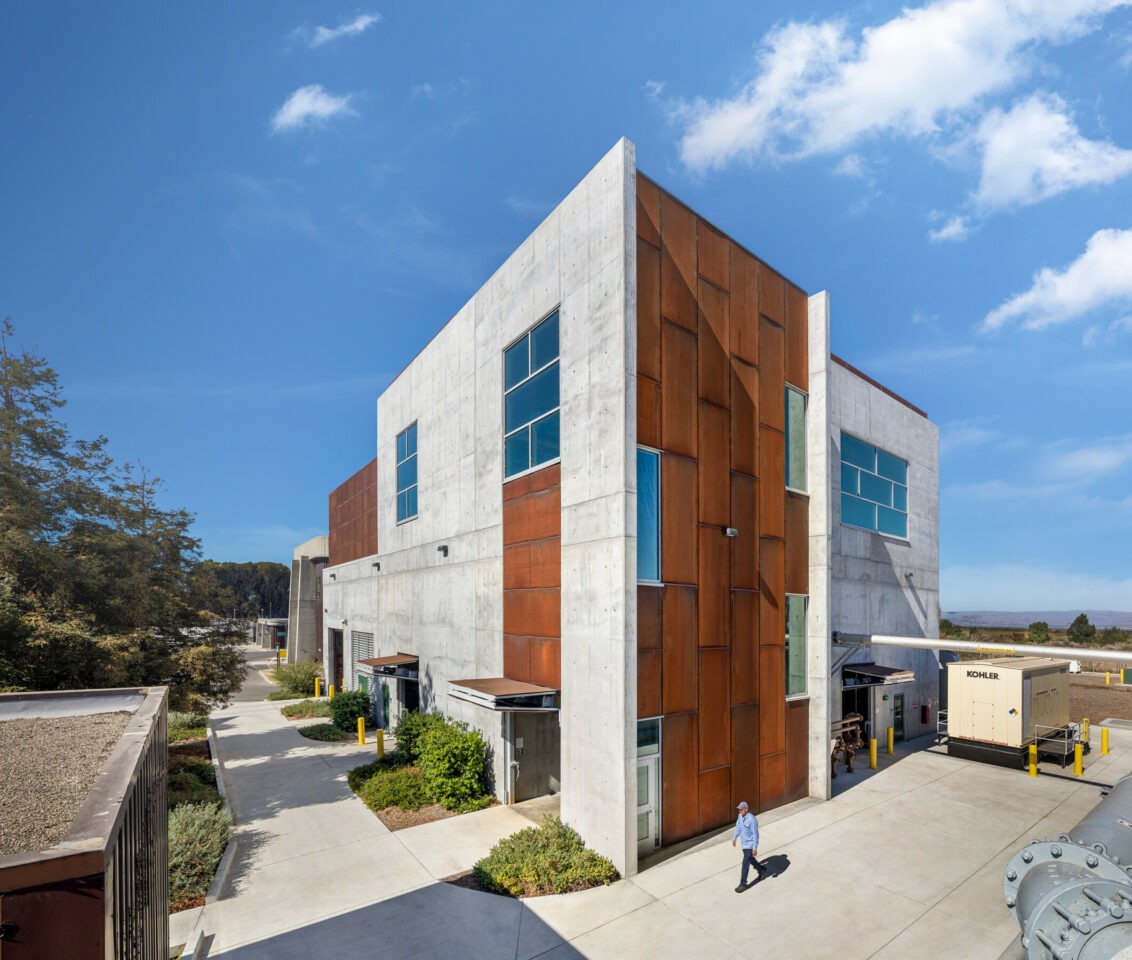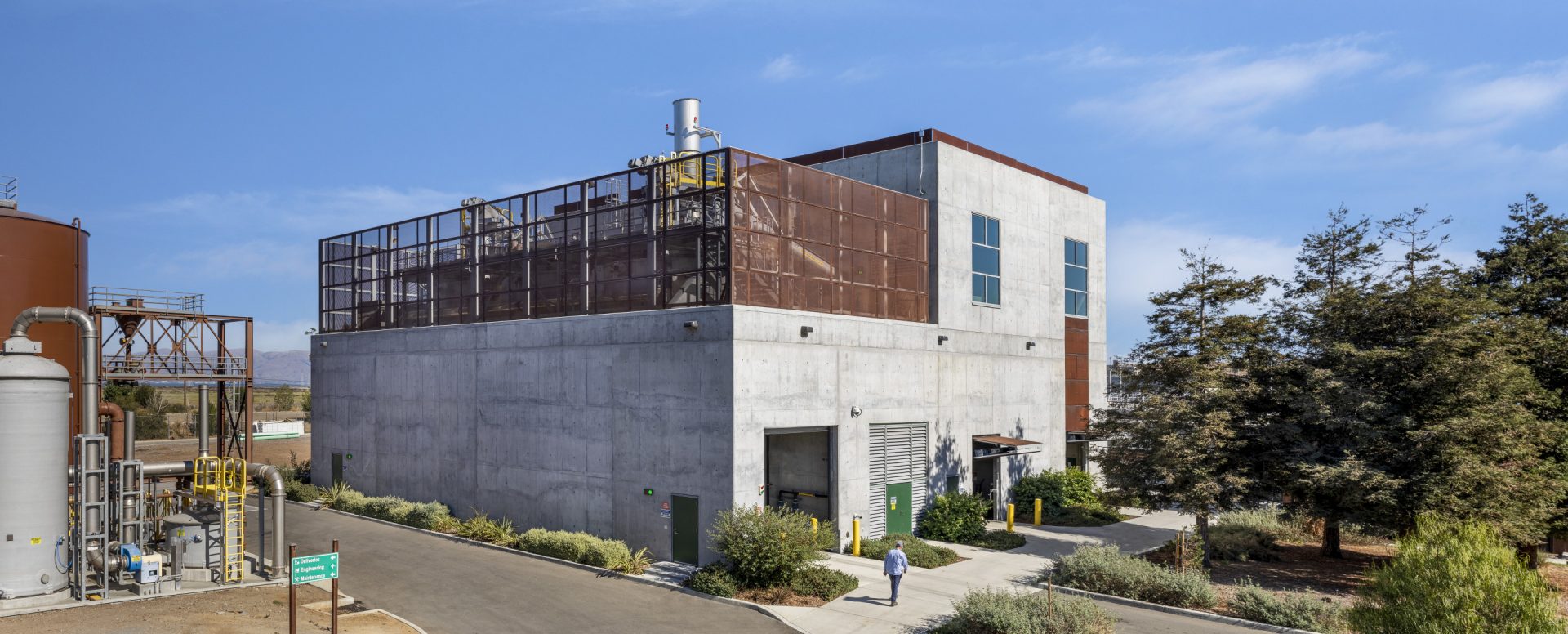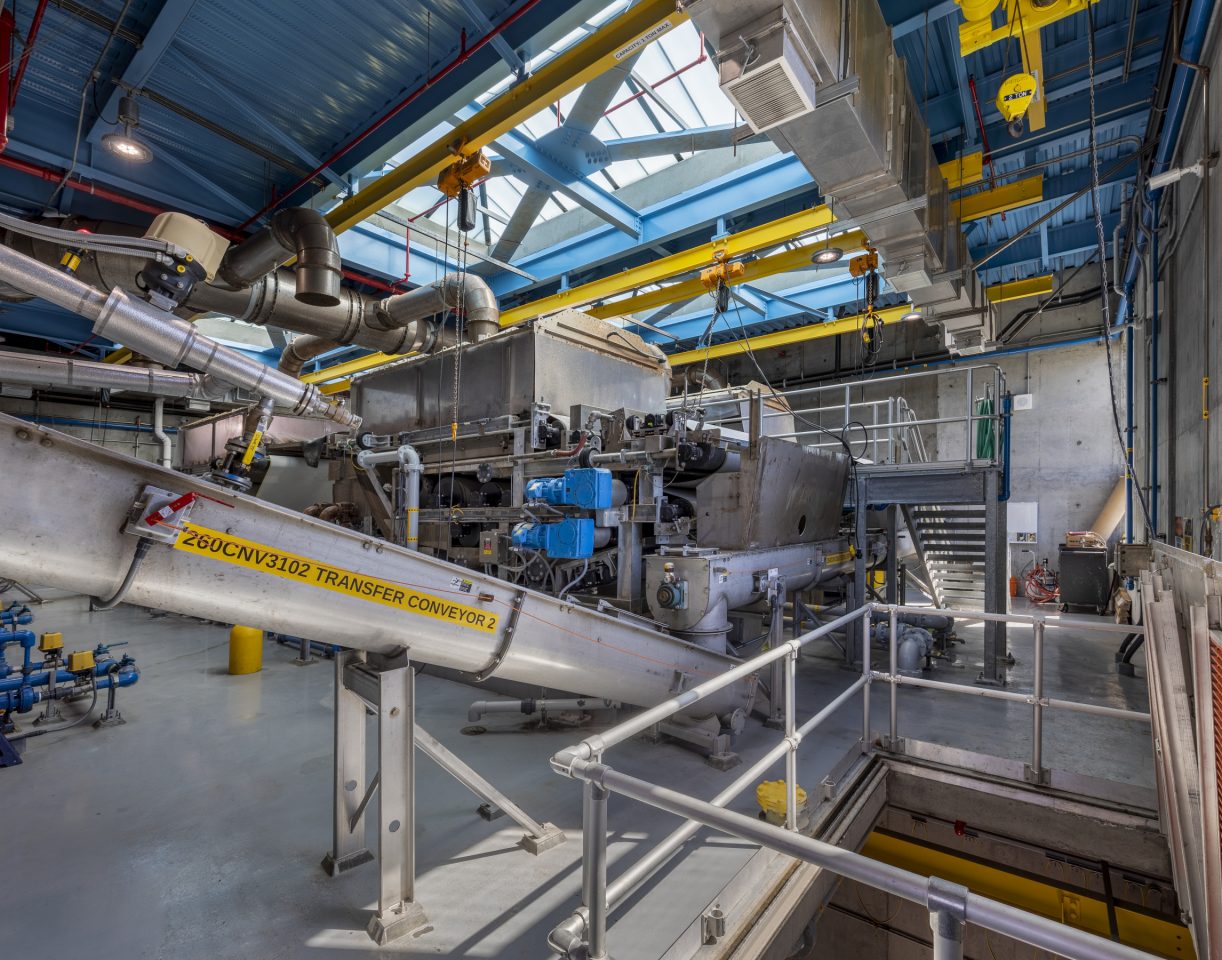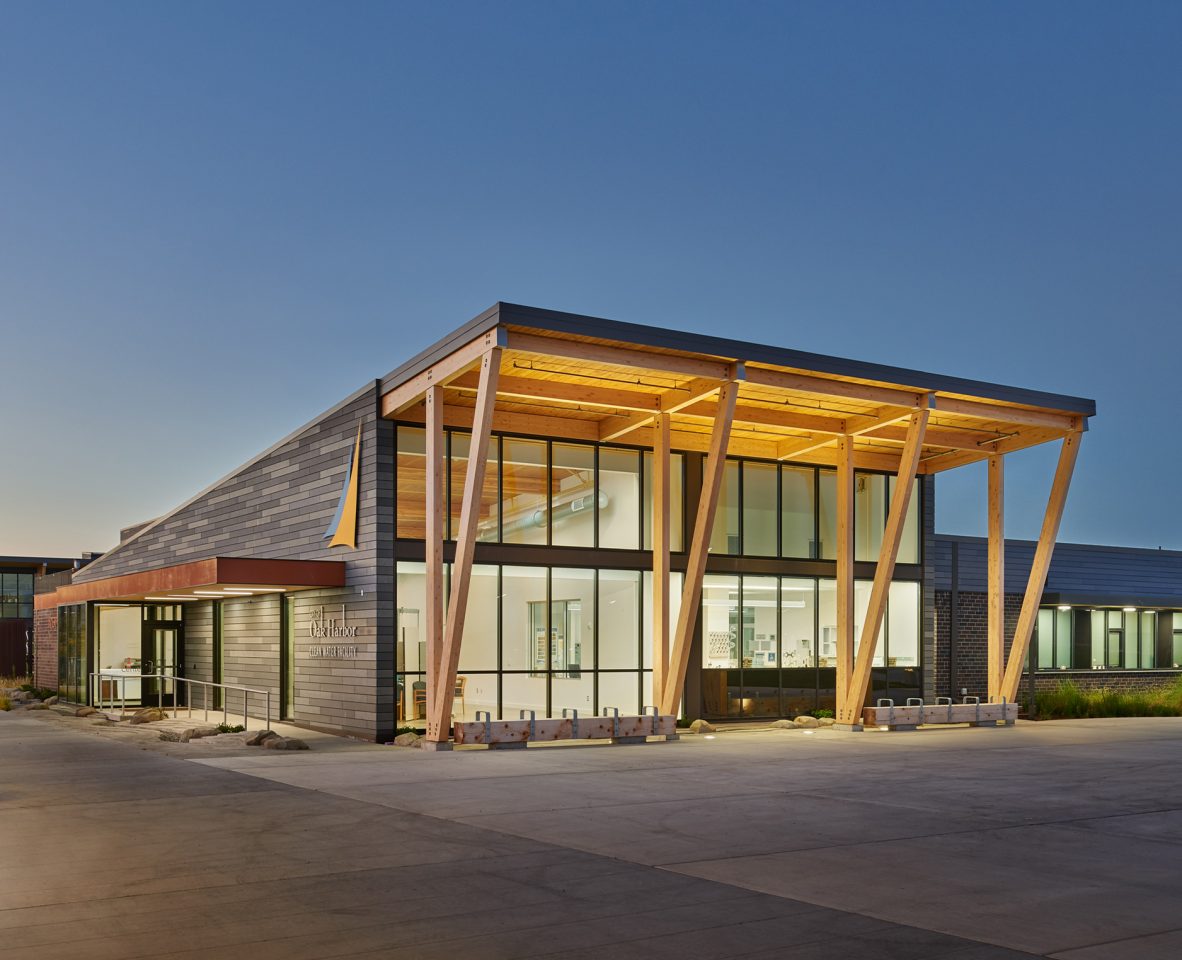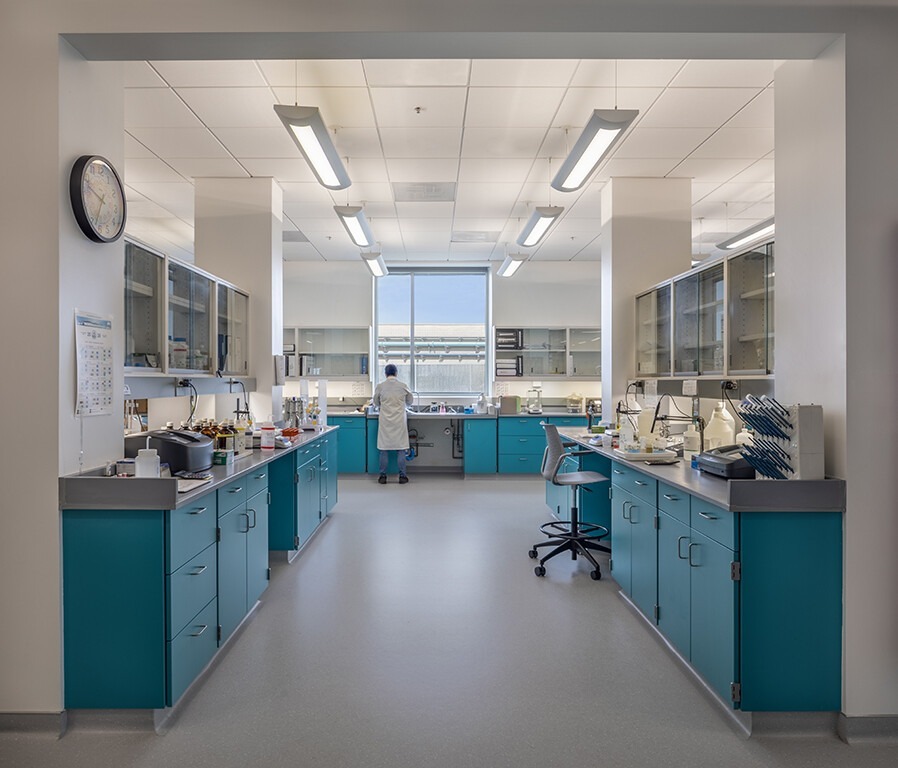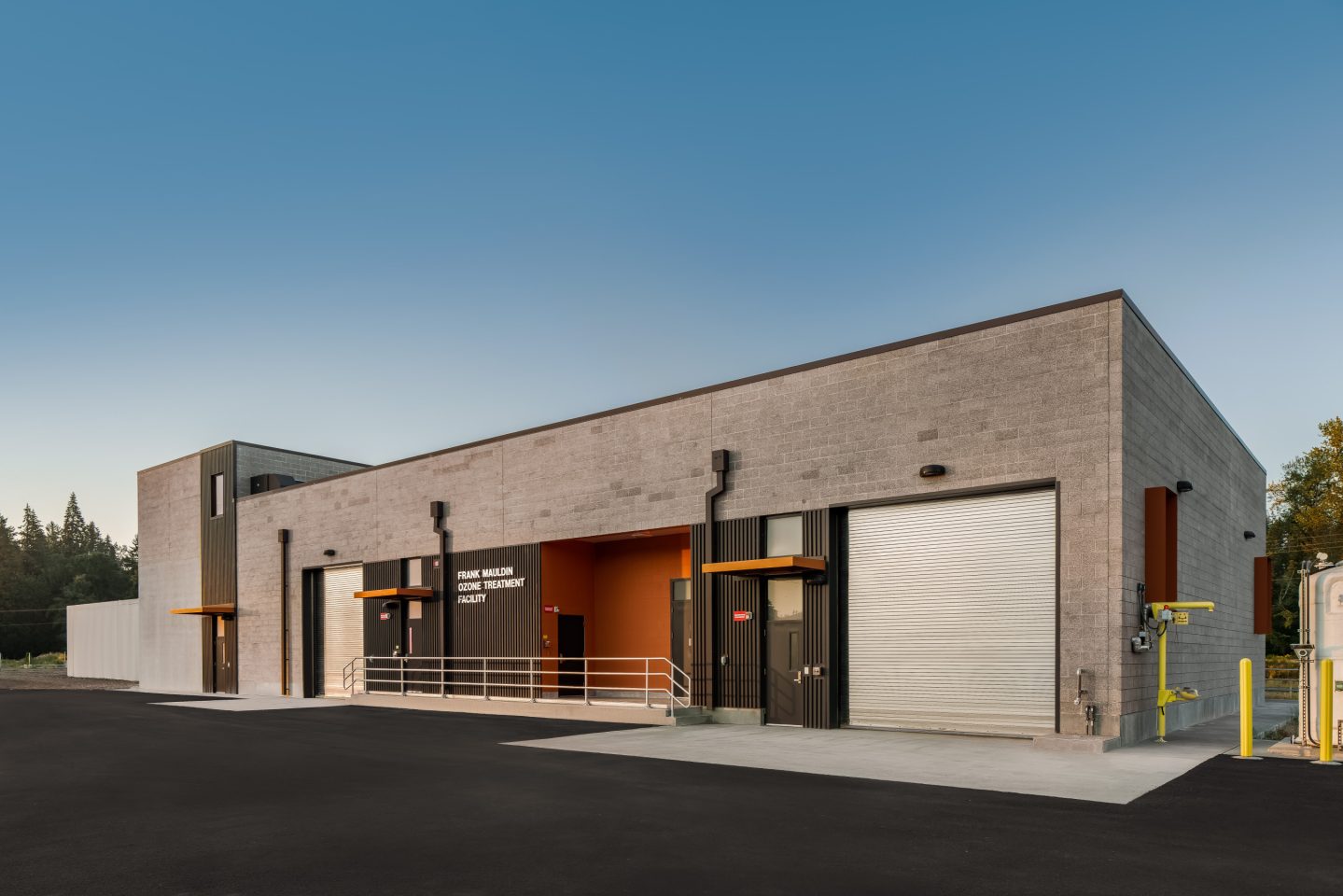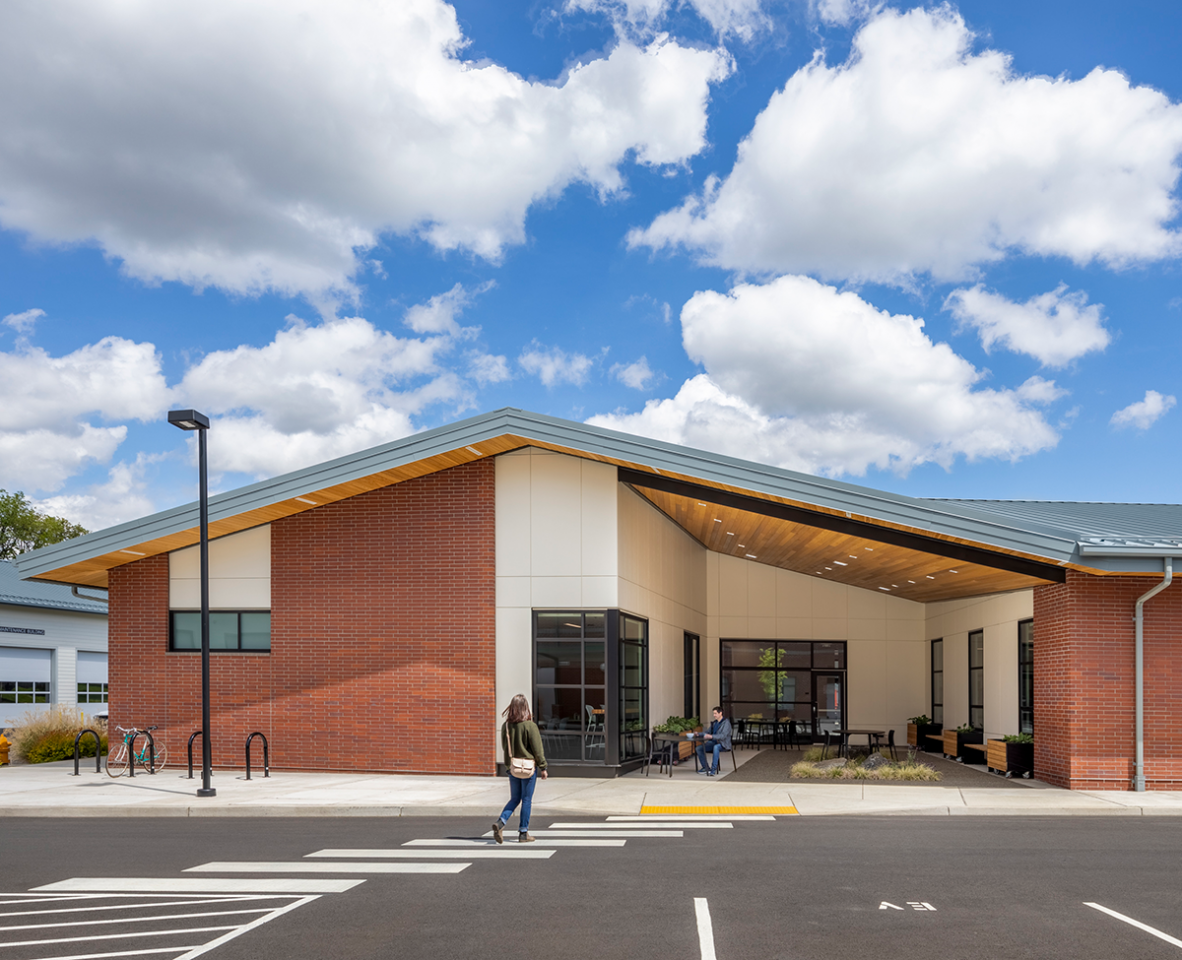palo alto dewatering and loadout facility
The Palo Alto Dewatering and Loadout Facility is a new 12,500 SF building containing wastewater process equipment that sustainably disposes of bio-waste. Viewable from the plant entrance, the facility helps set the tone for the aesthetics and functionality of the campus.
PROJECT CONTACT
LOCATION
Palo Alto, CA
OWNER
City of Palo Alto
SIZE
12,500 SF
COMPLETED
2019
PHOTOGRAPHER
David Papazian
BACKGROUND
Beginning in 1972, the Palo Alto Regional Water Quality Control Plant utilized an incinerator facility to dispose of solids, releasing 20,000 metric tons of carbon dioxide annually. Replacing the two aging incinerators, the Palo Alto Dewatering and Loadout Facility treats and dehydrates the solids. The dewatered solids are then loaded into trucks and taken off-site for further processing. The facility hauls away sixty-eight tons of dewatered sludge each day.
EXTERIOR
The facility takes the form of a two-story, cast-in-place concrete structure containing space for belt filter presses, sludge storage bins, enclosed truck loadout bay, and other process support areas. Core-ten steel cladding, used in other structures throughout the campus, becomes a primary design element for the new dewatering facility. Designers strove to blend the facility into the surrounding built and natural environment while reinterpreting industrial components with a modern architectural palette. The contrasting colors of natural materials combined with the strong vertical proportions along the front of the building create a bold yet well-integrated addition to the plant campus.
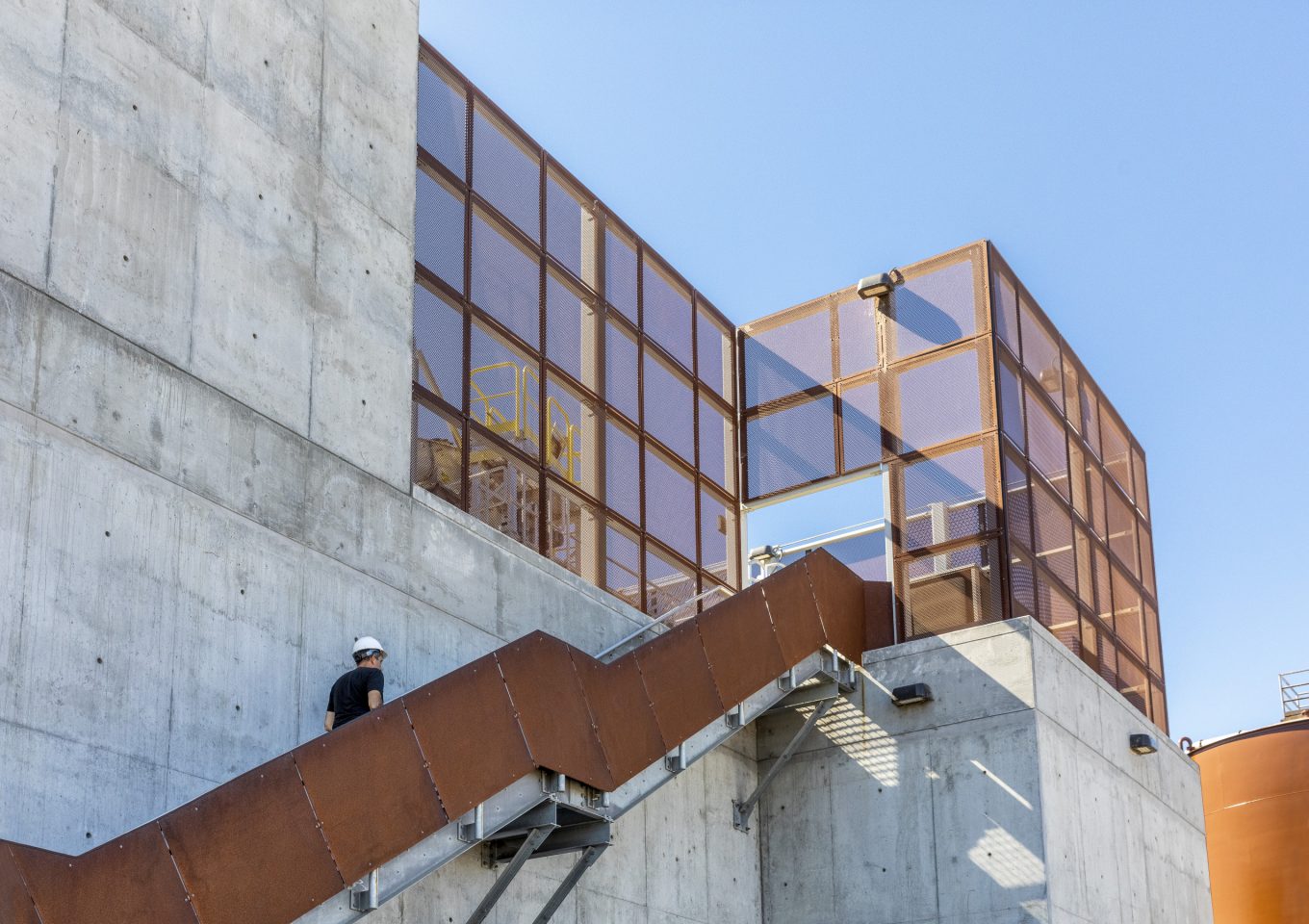
Perforated metal screens envelop the equipment on the second floor, softening the appearance of the stainless-steel process equipment.
Using material as a wayfinding technique, the weathered steel panels articulate the entrance for both trucks and employees. Drawing the eye with color and texture, the entrance is the first thing people will see as they arrive.
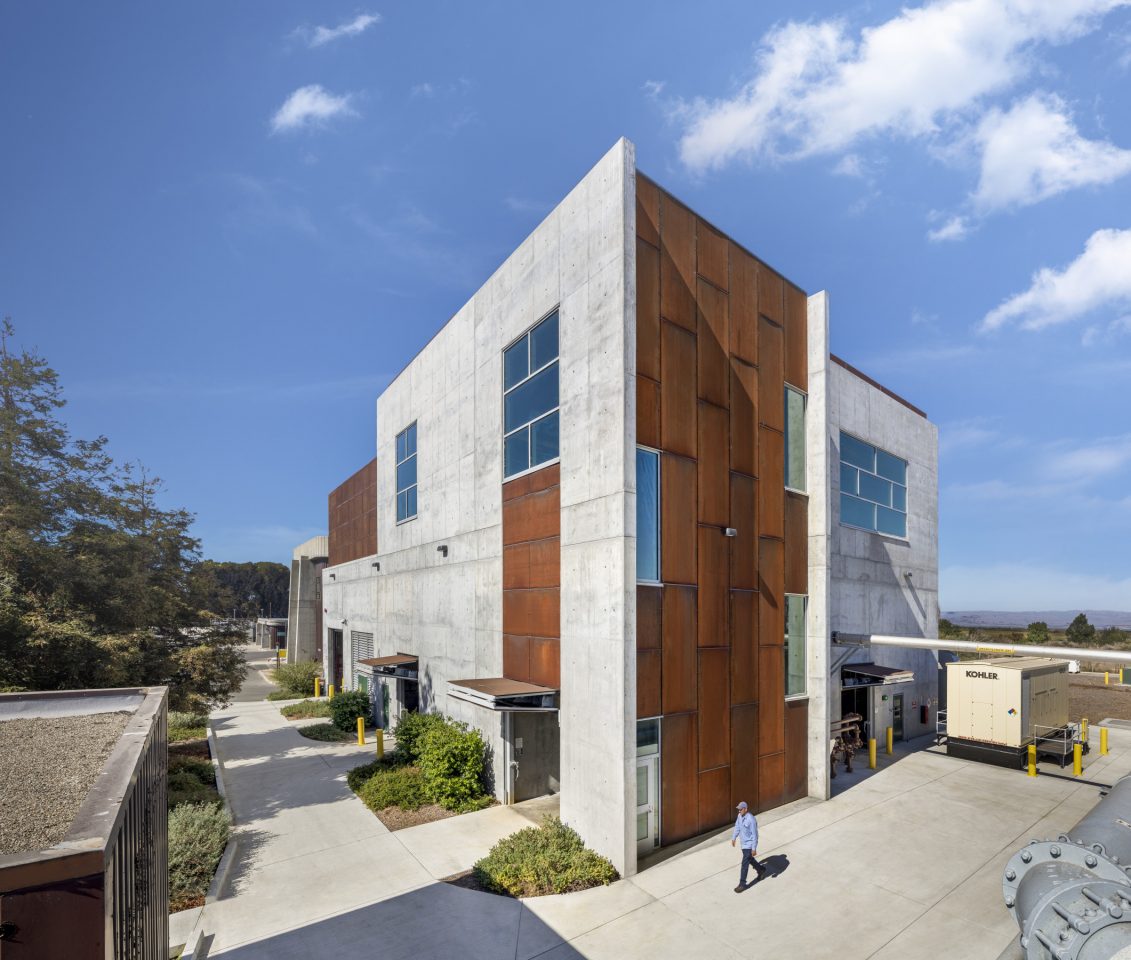
INTERIOR
Filled with process equipment, the focus of the interiors was to flood natural light into the process areas. On the first floor of the building, a control room, a sample testing lab, and two small rooms are available for employee use.
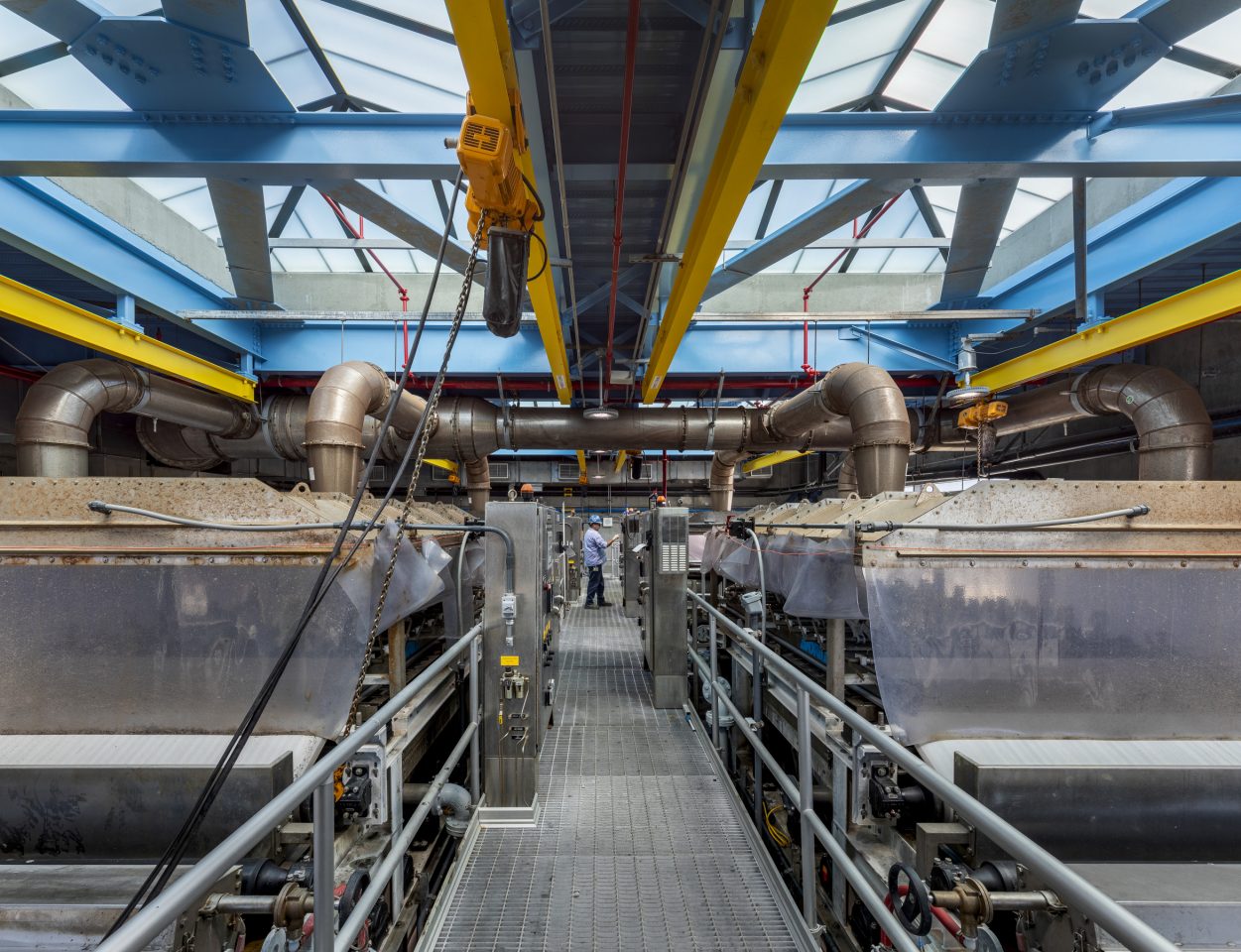
Large skylights and windows on the second floor connect employees to the outdoors. Storage bins are located outside on the second floor, accessed through the dewatering facility or an exterior staircase.

